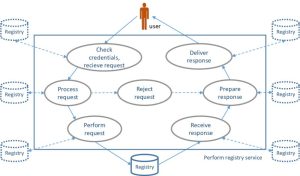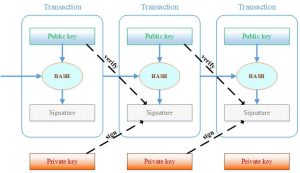Despite the potential benefits, distributed ledger technology has certain limitations that may prevent its successful implementation by watch companies. These limitations include scalability, interoperability, and complexity.
Scalability is one of the most important limitations of distributed ledger technology. The current architecture of many distributed ledgers can lead to slow processing times and high transaction costs. This can make it difficult to use the technology for high-volume transactions, such as those required to purchase luxury watches.

Interoperability is another limitation of distributed ledger technology. Different distributed ledgers may have different protocols and standards, which makes it difficult to communicate with each other. This lack of interoperability can lead to data silos that are difficult to reconcile.
Interoperability is the ability of different systems or platforms to work together seamlessly. In the context of distributed ledger technology, interoperability is a key factor in the efficient and effective use of technology. However, the current lack of interoperability in the distributed ledger space is a major constraint for watch companies wishing to adopt the technology.
The watch industry is highly fragmented, with many different brands and manufacturers operating independently. As a result, there is no standard protocol or system for tracking the origin and ownership of luxury watches. Distributed ledger technology has the potential to solve this problem by creating a common, unbreakable database that can be used to track the history of a watch from its birth to its current owner.
However, the lack of interoperability between the various distributed ledgers can make it difficult for the various players in the watch industry to work together effectively. For example, a manufacturer may use one distributed ledger to track the production and certification of its watches, while a retailer may use another distributed ledger to track the ownership and transfer of the same watches. Without a standardized protocol or information exchange system, it is difficult for these different distributed ledgers to communicate with each other.
This lack of interoperability can lead to silos of data that are difficult to reconcile. For example, if a retailer wants to verify the origin of a watch produced by a manufacturer using a different distributed ledger, it may need to manually enter the manufacturer’s ledger information into its own ledger. This can be time-consuming, error-prone and lead to a lack of confidence in the system as a whole.
To overcome this limitation, the watch industry may need to work together to develop a standardized protocol or system for tracking the provenance and ownership of luxury watches. This may involve the development of a common database or the creation of a set of interoperable protocols and standards that can be used by various industry players. By working together to overcome this limitation, the watch industry can take full advantage of the potential of distributed ledger technology and provide customers with a more transparent and secure system for tracking the history of their watches.
Finally, the complexity of distributed ledger technology can also be a limiting factor. The technology requires a certain level of technical expertise to be developed and used effectively. This can make it difficult for watch companies to integrate the technology into their existing systems and processes.
The complexity of distributed ledger technology can be another constraint for companies looking to adopt it. The watchmaking industry is known for its long-standing traditional practices, which can make it difficult to integrate new technologies that require a certain level of technical expertise.

Introducing distributed ledger technology to the watch industry will require significant changes to the existing systems and processes used by companies. This can include changes to supply chain management, inventory tracking, and authentication processes. Additionally, the technology may require investment in additional resources such as hardware and software, as well as expertise in implementation, maintenance, and support.
An example of how complexity constraints can be a challenge for watchdog organizations is in the area of authentication. For luxury watch brands, verifying the authenticity of each watch is key to maintaining brand value and customer trust. However, the authentication process can be time-consuming and costly. Distributed ledger technology has the potential to automate and streamline the authentication process, but it requires significant technical expertise to implement.
Another example is in the field of supply chain management. The supply chain for a luxury watch can be very complex, involving multiple suppliers and manufacturers in multiple countries. Distributed ledger technology can provide a secure and transparent system for tracking the movement of parts and finished products throughout the supply chain, but implementing this technology requires significant changes to existing supply chain management systems.
To overcome the constraints of complexity, companies surveyed may need to invest in specialized knowledge and resources to effectively implement and maintain distributed ledger technology. This may include hiring technical experts or partnering with technology companies that specialize in distributed ledger technology. Companies may also need to invest in training and education to ensure that employees have the skills and knowledge needed to use the new technology.
Another way to address complexity reduction is to adopt a phased implementation strategy, which may involve introducing distributed ledger technology in certain areas of the business on a limited basis and gradually expanding its use over time. This allows companies to gain experience using the technology and identify and resolve any issues that arise before a broader implementation.
Overall, these limitations could make it difficult for watch companies to successfully adopt distributed ledger technology. While the technology has the potential to offer significant benefits, such as increased security and transparency, watch companies should carefully consider these limitations before committing to using the technology. In order to take full advantage of distributed ledger technology, they may need to invest additional resources or explore alternatives.


